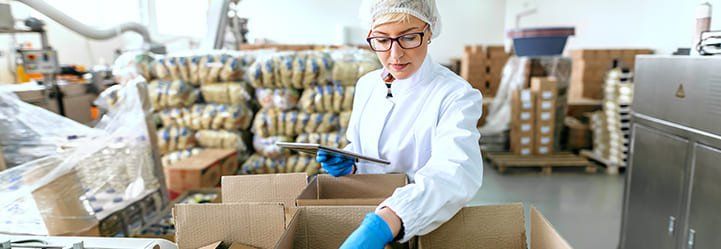Food logistics: processes and services needed for success
Alimentos SAS • Mar 09, 2022
Today, we obtain food from wholesalers, retailers, and restaurants, to name a few common providers. Such convenience when purchasing food products is directly related to a host of carefully designed, planned processes whose effectiveness lies at the center of the success of any food business. Read on to discover the importance of food logistics.
What do food logistics entail?
As you know, there are many processes to take into account when running a business in the food industry: procuring direct materials, demand planning, and achieving food certifications – each holds significance in order to reach success.
However, few are as crucial as the ones involved in food logistics. They pertain to the efficient and effective planning, execution, and control of the flow of goods to meet customer requirements. As a result, these processes are a central part of food supply chain management, as they deal with activities like (Logistics, 2021):
- Transportation of goods.
- Vehicle selection to meet specific requirements to transport goods.
- Materials and tools selection to handle goods.
- Proper storage.
- Inventory management.
So, food logistics concentrate on transport, storage, and distribution of food products. These activities impact producers, merchants, and (ultimately) consumers. Without them, food would have issues arriving to manufacturers and final consumers. Moreover, if they are not conducted properly, they can put food safety at risk, which in turn increases the possibility of food waste and spoilage.
Now let’s take a closer look at the main logistical aspects any successful business needs to master.
The pillars of successful food logistics
The transportation, handling, and storage of products are paramount to all players in the food supply chain. They help ensure the goods remain safe for consumption after fulfilling the respective processes of the food-processing industry (Christiansen, 2020). For example, fruit that has been processed into puree to act as an ingredient in other products like beverages, baby food, or confectionery still needs proper logistical handling to retain its quality.
Furthermore, logistics participants are always looking to improve their methods to fend off food waste and spoilage.
Both are costly and damaging to food industry businesses (Christiansen, 2020). The modern supply chain poses a challenge because of the large number of parties exchanging goods (GlobalTranz, 2018).
Such a scenario calls for solid, effective practices that safeguard food quality.
Temperature control
Proper temperature is vital when handling food products, both during transportation and storage. Today, food logistics operators can use technology to control the temperature inside vehicles and warehouses. For instance, Internet of Things (IoT) sensors can timely perceive and report the temperature of sensitive products like fresh produce, frozen fruit purees, or dairy (Rangaiah, 2020).
Effective monitoring
Technology helps operators effectively oversee and monitor their processes on farms, in warehouses, at pickup locations, and in vehicles. Some leading examples of technological tools are big data, artificial intelligence, Bluetooth devices, Radio Frequency Identification Devices (RFID), and scanners (Christiansen, 2020).
For example, Meal-kit company Blue Apron uses data analysis to make timely decisions about production and delivery. They check information about factors that may affect transportation, such as weather and traffic conditions (Rangaiah, 2020). Similarly, syrup and sugar producer RxSugar uses aggregate data software to gauge demand at all their commercial channels. It helps inform their production processes properly (Kroll, 2021).
Elsewhere in the industry, retailer Cub strives to be at the forefront of grocery supply chain practices. They use a delivery software capable of re-routing orders to efficiently add a new order into the schedule, even minutes before a delivery starts. Salad dressing producer Ken’s Foods uses an automated storage and retrieval system at their distribution center for better control and energy performance (Kroll, 2021).
Suitable packaging
Packaging is key to avoiding the contamination of food products. Businesses need to tend to the following aspects of packaging (Christiansen, 2020; GlobalTranz, 2018):
- Sanitation of packaging machinery and facilities, as well as transportation vehicles.
- Use of sterile packaging.
- Correct hygiene practices among employees and partners.
Regular audits
Continuous auditing of food logistics acts as a proactive measure to make sure operations run smoothly. It helps identify bottlenecks in key issues like food safety, traceability, and partners and third-party practices (GlobalTranz, 2018).
The transportation, handling, and storage of food products prove a vital step of the food supply chain. They are responsible for upholding the quality and safety of these goods up until consumption.















